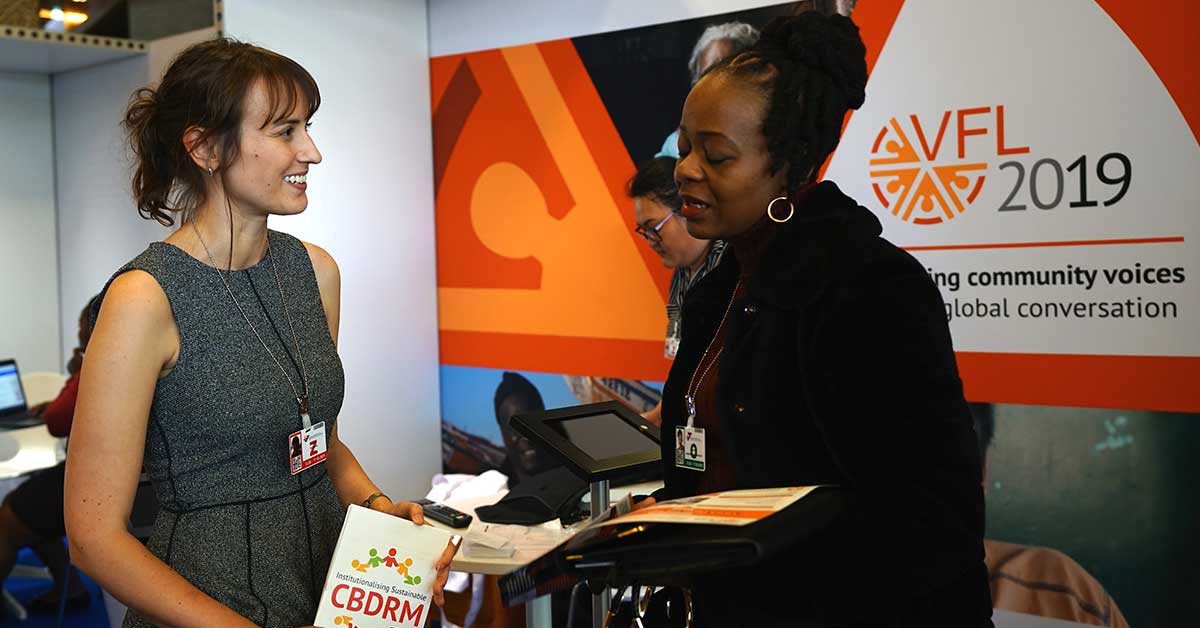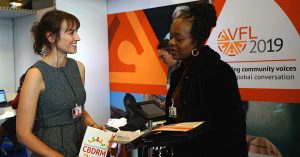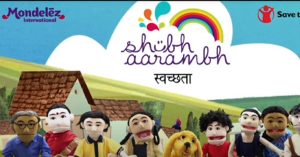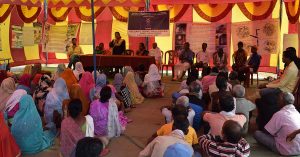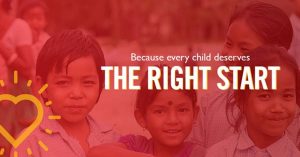Partner: The Global Network of Civil Society Organisations for Disaster Reduction (GNDR)
Sector: Disaster Risk Reduction
Location: 50 countries across Africa, Asia-Pacific, Europe and Central Asia, and Latin America and the Caribbean
Languages: English, French, Spanish
SDGs: Goal 3: Good Health and Well-being, Goal 4: Quality Education, Goal 10: Reduced Inequality, Goal 13: Climate Action, Goal 15: Life on Land, Goal 16: Peace and Justice Strong Institutions, Goal 17: Partnerships to achieve the Goal
Funded by: Directorate-General for International Cooperation and Development (DEVCO)
Developing a platform to showcase a ‘people-centred’ resilience-building approach
Between 2005 and 2015, “more than 1.5 billion people have been affected by disasters in various ways, with women, children and people in vulnerable situations disproportionately affected”. From its inception, The Global Network of Civil Society Organisations for Disaster Reduction (GNDR) has focused on the people “on the frontline of disasters”: local communities, civil society organisations and authorities. It the largest international network of organisations committed to working together to improve the lives of people affected by disasters world-wide.
Views from the Frontline (VFL) is an independent global review of disaster risk reduction at the local level. In 2009, GNDR launched Upscaling Community Resilience through Ecosystem based Disaster Risk Reduction (Eco DRR) [“the VFL 2019 Project”] as a global monitoring initiative involving the mobilisation of over 500 organisations across 69 countries in a participatory local monitoring process measuring the progress of the United Nations (UN) and local governments in strengthening community resilience. VFL was implemented worldwide again in 2011 and 2013 and has gathered to date the views of more than 85,000 stakeholders across 129 countries.
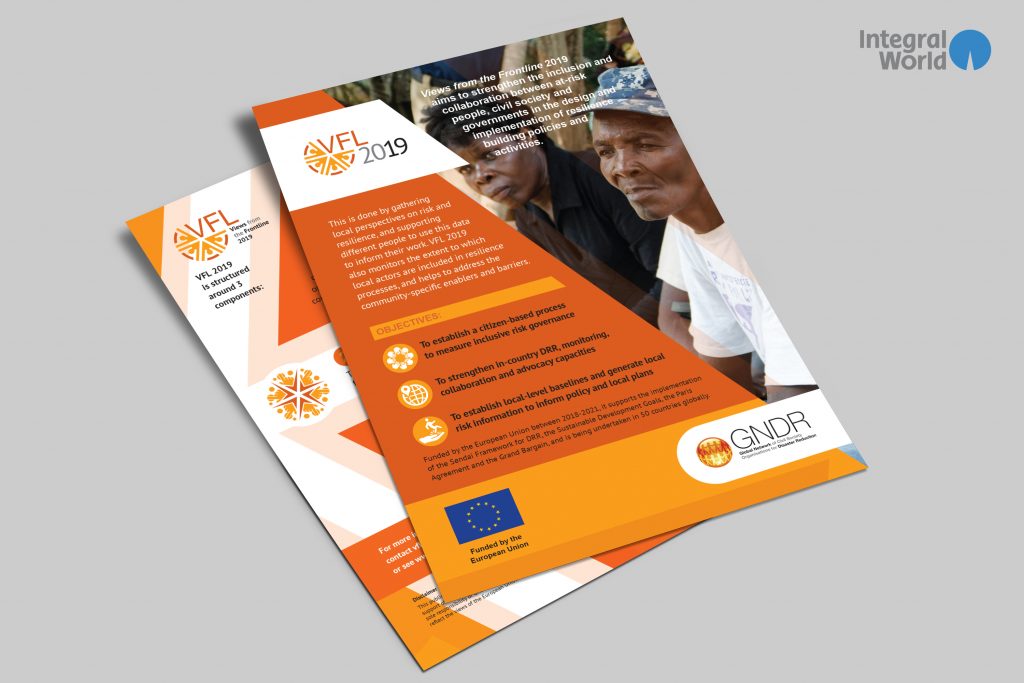
While all the global development frameworks acknowledge the importance of including local actors; however, they fail to recognise the importance of monitoring the targets of global frameworks; especially monitoring SFDRR targets. VFL 2019 therefore fills this gap by providing complimentary monitoring, baseline and data to help guide actors to more effectively achieve the targets of the post-2015 development frameworks, especially the SFDRR, strengthening the accountability of governments, intergovernmental agencies and all other stakeholders to local communities and their resilience priorities.
VFL 2019 aims to establish a local baseline and local monitoring process to measure progress towards achieving an inclusive “people-centred” approach to resilience-building while increasing awareness and strengthening accountability of governments and inter-governmental bodies. The process takes a systems-wide perspective that recognises different actors have different but related responsibilities at different administrative levels.
Integral World (then THOTIN) partnered with GNDR to make VFL, its process, its outcomes, and international impact instantly recognizable and understandable. We strategized and created a brand identity for VFL adaptable to different cultures and languages. Given the scale of the project – implementation in 50 countries across Africa, Asia-Pacific, Europe and Central Asia, and Latin America and the Caribbean – and the application of an intensive methodology, we needed to evolve an easy-to-comprehend style of representing the project.
Amplifying voices to reach the right ears
GNDR has the vision of creating a vibrant, active, collaborative civil society which supports people and their communities, particularly poor and vulnerable groups, in preparing for, mitigating, responding to, and recovering from disasters and adapting to to extreme hazards, shocks and disturbances in a changing climate.
Our collaboration went to the heart of GNDR’s strategic objectives, defined in their “Stronger Together” strategy for 2016-2020. These objectives include:
- Increasing civil society’s impact in influencing policies and practices at local, national, and international levels
- Enhancing collaboration capabilities of civil society as well as the cooperation with other stakeholders
- Strengthening creation, analysis and sharing of knowledge
Our main topics of focus for this project were Localisation and Coherence, defined as:
- Localisation: The significance of local actors in humanitarian action needs to be acknowledged and given due credit. Whether it is the local authority, civil society leadership, or the communities themselves, these actors must be supported in meeting the requirements of those affected by disasters. Their actions can also go a long way in developing national-level responses to future catastrophes. Characteristics of localisation: permanence, effectiveness, ownership, adaptiveness, inclusion, leadership.
- Coherence: During the post-disaster response formulation phase, there will be efforts from both a humanitarian as well as a social development perspective. It is massively important that these efforts are coherent, and coherently based on mutual understanding – not just of the community but also of the potential of each form of action and how best they can complement each other’s strengths. Ideally, both efforts should aim for long-term community resilience building , and integrate approaches to this in the response actions. Characteristics of coherence: collective outcome, political leadership, a common or shared risk information and vulnerability analysis, sustainability.
Our specific focus on the three-year VFL 2019 project also aligned with the project’s two focus topics, viz. localisation and coherence (see section on right), besides also folding in the following ambitions.:
- Increased access to actionable, timely and disaggregated local data
- Increased capacity of local actions to engage in resilience actions
- Increased use of local data in resilience building processes
- Increased engagement between different actors in resilience building process
VFL 2019 being all about participation and actions towards building community’s resilience, we needed to brainstorm ways of amplifying the voices of the marginalised and vulnerable communities to the global level. Further, participatory survey methods had to be translated into informative graphics which could facilitate communities’ and local actors’ decision making on key resilience-building actions.

A critical aspect of our work involved understanding the variou audiences whom VFL 2019 targeted, beyond local actors and GNDR members. These included both National Coordinating Organisations as well as local partner organisations; local government officials at various levels; local civil societies; and other national stakeholders, e.g. academia, media, etc. Also on the radar were international donors and academics supporting local activities, with UN agencies such as the UN Office for Disaster Risk Reduction (UNISDR) also among the secondary audience.
“Given the huge scale of the project – reaching ~50 countries – we had to evaluate the communities’ profiles, backgrounds, and cultures besides their problems. This way, we could encourage them to share their views openly. This in turn facilitated our own understanding; we could come up with a solution to which they could easily relate.”
Manisha Munjal, Director, Integral World
Creating powerful, lasting brand associations
Our vision for the VFL branding took shape from the diversity of views which VFL seeks to amplify, via becoming a platform created to showcase a ‘people-centred’ resilience-building approach. Our brand guideline addressed the larger aspect of ensuring coherence across the many countries where VFL is being implemented, with adaptations in French and Spanish as needed. Our branding solution also embraced the multi-year, continuing nature of VFL.
In order that VFL did not suffer a lack of understanding, we put together an implementation handbook for National Coordinating Organisations providing an understanding of the phases and steps involved in VFL 2019, thus helping them achieve key objectives, outputs and outcomes. Similarly, we were able to put together a simple, graphical summary of VFL2019 that could be more broadly leveraged.
The essence of the VFL project, as described above, emphasises:
Collection of Voices, Reflection and Analysis of the Voices (or “Distillation” ), and Intensifying the voices to the local, national, regional and global/international level (or “Action”).
“It is always a pleasure working with THOTIN team – prompt, positive and creative as always!”
Shivangi Chavda, VFL Coordinator, GNDR
A Solution for Today, Simplifying Tomorrow
In our partnership with GNDR, we further suggested strenghtening this project by building the capacity of the NCOs in survey implementation through a training workshop, developing training and engagement tools for the Participating Organisations, preparing national VFL reports and infographics explaining the outcomes, creating a global findings report, and developing a global campaign based on VFL 2019 findings. These communications tools will be handy for smooth implementation of the project.
Keywords: Disaster, Risk Reduction, National Coordinating Organisations, extreme hazards, resilience-building, Resilience, civil society organisations, governments, Training Toolkit, Implementation Handbook, children and people in vulnerable situations, Local Civil Societies, Disasters, vulnerable people, Communities, Views from the Frontline, Goal 3:Good Health and Well-being, Goal 4:Quality Education, Goal 10:Reduced Inequality, Goal 13:Climate Action, Goal 15:Life on Land, Goal 16:Peace and Justice Strong Institutions, Goal 17:Partnerships to achieve the Goal, Asia Pacific, Africa, Europe and Central Asia and Latin America and the Caribbean.

